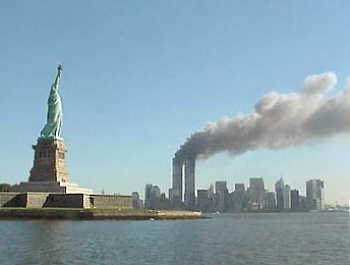There isn’t as much hype around this year’s 9/11 anniversary as there was last year. Understandably, the 10-year anniversary carried a special significance.
Yet, for local residents who witnessed the attacks or lived through the aftereffects, every September brings back the wrenching memories and emotions attached to that fateful day. Locals will never forget the dreadful moments in the minutes after the hijacked planes crashed into the Twin Towers — when some were dropping their children off at school, others rushing to work late and others working in the Towers themselves.
But most memorable, perhaps, is the way in which area residents came together to rebuild their shattered, desolate area. People from all walks of life have participated in Downtown’s post-9/11 rebuilding effort, which has resulted in the area becoming one of the most prosperous residential and commercial districts in the city. Since 2001, Downtown has seen its residential population double in size, several new K-12 schools open up and scores of businesses sign leases for commercial space.
Yet with Lower Manhattan’s successes have come serious challenges. As has been widely reported, the National September 11 Memorial Museum isn’t opening this month, as had been hoped, due to a seemingly endless financial dispute between the 9/11 Memorial Foundation and the Port Authority. The delay is troubling, and particularly galling for those who lost loved ones on 9/11 and who have been anxiously awaiting the museum’s opening for years now.
It’s time for the disputing parties to come together and reach a workable compromise and get the job done — to honor the deceased 11 years after the attacks.
The lack of a robust tenancy for the new World Trade Center towers is also worrisome. Though developer Larry Silverstein continues to voice optimism for Tower 3, for example, there is no reason to believe he will be able to meet his commitment of leasing 400,000 square feet of space by the end of 2013. If he isn’t able to do so, construction on the building will come to a halt, and the developer will build a temporary roof atop the seven floors already built out. This would create anxiety about the tower’s fate and postpone the completion date beyond the current target of 2015. That, in turn, could have a detrimental impact on the W.T.C. complex as a whole — in terms of both completion and tenancy — since construction of all the towers is often interconnected.
Downtown is also struggling to keep its public infrastructure up to the level of its residential growth. And the neighborhoods are experiencing a startling dearth of affordable housing — a problem without any immediate solution in sight. The few subsidized apartments left, at Independence Plaza North and Southbridge Towers, are in jeopardy of becoming market-rate, and the city hasn’t committed to building new affordable units in the area. That, coupled with the thriving real estate market, will continue to push middle- and low-income families out of the area.
Also, Downtown’s public schools continue to burst at the seams, causing parents to search desperately for alternative options for their children’s education.
But, for the most part, these are all expected and manageable growing pains in Downtown’s rebirth. We survived the worst terrorist attack on American soil in the nation’s history. The area will be able to weather the hardships accompanied by its revitalization. This is largely thanks to Downtown’s stalwart residents and elected officials, who work tirelessly to see issues through to completion in an effort to simultaneously preserve a high quality of life and rebuild their cherished neighborhoods. It is this collective dedication and strength that will get them through the coming years of shortfalls.


















